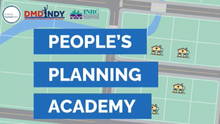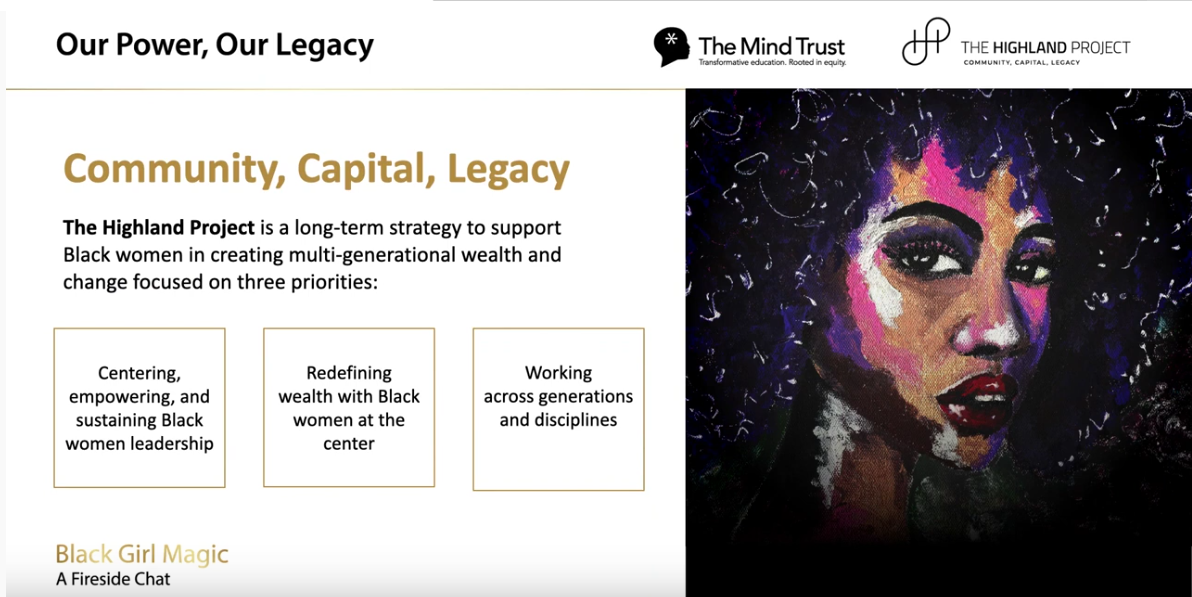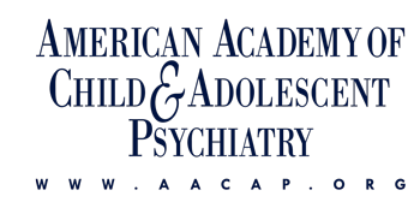
Tactical Urbanism: Taking Short-Term Actions to Generate Long-term Change.
|
| ||||||

Psychiatrist and professor Dr. Chester Pierce coined the term microaggression in the early 1960s to describe modern-day racism in the U.S. Pierce stated that most racial offenses are “subtle and stunning” and that the “enormity of the complications they cause can be appreciated only when one considers that the subtle blows are delivered incessantly” (Pierce, 1970, pp. 265-266). The repetitive patterns of aggressive acts/ oppression inflicted upon individuals of Color have an accumulative effect on the physical, social, and emotional well-being of people of Color (Pierce, 1970). Further, microaggressions may be exacerbated by intersectionality; that is, the volume of microaggressive acts may increase due to the intersections of other minoritized identities (e.g., people with disabilities, LGBTQ+, woman/girl, non-cisgender expression, etc.) (Williams et al., 2021).
|
| ||||||
|
Screen Time and Children
No. 54; Updated February 2020 Children and adolescents spend a lot of time watching screens, including smartphones, tablets, gaming consoles, TV’s and computers. On average, children ages 8-12 in the United States spend 4-6 hours a day watching or using screens, and teens spend up to 9 hours. While screens can entertain, teach, and keep children occupied, too much may lead to problems. Parents may not always know what their children are viewing or how much time they are spending with screens. Children may be exposed to:
|

At TCP, we put ideas into action to improve the lives of children. We work at the intersection of research, policy, and community engagement to advocate on behalf of children, especially those from underserved communities. From improving health coverage and care to expanding digital health tools and opportunities, our work is to always look for solutions that will make a difference in the lives of children in California and across the nation. Our unique model harnesses the power of collaboration to break down silos and reinvent systems for delivering quality care and opportunity for children and their families.

The State of Mental Health in America.
Mental Health America (MHA) is committed to promoting mental health as a critical part of overall wellness. We advocate for prevention services for all, early identification and intervention for those at risk, integrated services, care and treatment for those who need them, and recovery as the goal. We believe that gathering and providing up to date data and information about disparities faced by individuals with mental health problems is a tool for change. |
| ||||||

Black Girl Magic, A Fireside Chat https://youtu.be/Og9SRMnr4Fc
Three words that celebrate the achievement, perseverance, and change-agent spirit of the Black woman. Three words that speak volumes. Three words that speak to generations of strength, grit, and determination around securing a legacy of equality now and for generations to come. The Mind Trust partnered with The Highland Project to host this powerful live event at the Indianapolis Public Library - Central Branch on Thursday, October 28th at 6pm. This intimate discussion featured spoken word poetry from Indianapolis students and a panel discussion featuring four dynamic Black women who are leaders, community servants, and shining examples of Black Girl Magic. The panelists also represented four of the top issues revealed in The Highland Project's "Our Power, Our Legacy" report, which are: education, economic development, healthcare/wellbeing, and politics (including voting rights).
Three words that celebrate the achievement, perseverance, and change-agent spirit of the Black woman. Three words that speak volumes. Three words that speak to generations of strength, grit, and determination around securing a legacy of equality now and for generations to come. The Mind Trust partnered with The Highland Project to host this powerful live event at the Indianapolis Public Library - Central Branch on Thursday, October 28th at 6pm. This intimate discussion featured spoken word poetry from Indianapolis students and a panel discussion featuring four dynamic Black women who are leaders, community servants, and shining examples of Black Girl Magic. The panelists also represented four of the top issues revealed in The Highland Project's "Our Power, Our Legacy" report, which are: education, economic development, healthcare/wellbeing, and politics (including voting rights).
|
Exploring the Independent and Interactive Effects of Political Identification and Moral Foundations in Perceiving Threats from Latino Immigrants
Eric Kyere & Kai Wei ABSTRACT: This study explored the independent and interaction effect of political identification and moral foundations on perceived threats from Latino immigrants. Two hundred and eight adult Americans were recruited from the Amazon Turk Platform, 187 of whom completed the survey questions. On average, conservative participants reported higher realistic perceived threats from Latino immigrants in comparison with liberals. Consistent with prior work, multivariate regression analyses indicate that liberals at the superficial level were less likely to perceive a threat from Latino immigrants compared with conservatives. However, when political orientation/identification interacted with moral foundation, a nuanced picture emerged that contradicts the claim that liberals are more likely to be tolerant of immigrants. Negative associations between perceived threats from Latino immigrants and moral values rooted in harm and justice were observed. Finally, interaction effects suggest that efforts that foster moral values rooted in harm and fairness may reduce the perception of threat, regardless of political orientation, from Latino immigrants in the US. |
| ||||||
|
Predictors of graduation and criminal recidivism: Findings from a drug court that primarily serves
African Americans John R. Gallagher , Elizabeth A. Wahler & Anne Nordberg Drug courts are an alternative to incarceration for individuals who have substance use disorders. The drug court model is guided by key interventions (e.g., required treatment, frequent status hearings with a judge, continuous drug testing, prosecutors and defense attorneys collaborating in a non-adversarial manner) that are designed to promote recovery and wellbeing, as compared to traditional, punitive approaches to criminal justice. Evidence suggests that, in some drug courts, African Americans may graduate less, compared to their white counterparts. This is alarming because graduating drug court has consistently been a predictor of participants not being rearrested following participation in the program. This study predicted graduation and criminal recidivism outcomes for a drug court that primarily serves African Americans. The focus of the research is to inform drug courts about best practices in treating and retaining African American participants. Females, participants who were employed or were students, those whose drug of choice was marijuana, and participants with no criminal history were most likely to graduate. Participants with a criminal history and those who were terminated from drug court were most likely to recidivate. Implications for drug court practice are discussed, particularly in regards to enhancing resources for employment and the need to develop evidence-based treatments for African American drug court participant |
| ||||||

Relying on Women, Not Rewarding Them
New study suggests female professors outperform men in terms of service -- to their possible professional detriment.
By Colleen Flaherty
New study suggests female professors outperform men in terms of service -- to their possible professional detriment.
By Colleen Flaherty
|
Drug Court through the Lenses of African American Women: Improving Graduation Rates with Gender-Responsive Interventions
John Robert Gallagher, Anne Nordberg, Michael S. Deranek, Raychel M. Minasian Drug courts began in the United States in 1989, and nearly three decades of evidence has shown that drug courts are more effective than other criminal justice interventions at reducing criminal recidivism. There has, however, been a trend in some drug courts where African Americans are less likely to graduate than their White counterparts, which is concerning because evidence has also shown that graduating the program reduces the odds of recidivating. Little is known about African Americans’ experiences in drug court, and this is the first known qualitative study to ask African American women (N = 8) about the most helpful aspects of drug court that support them in graduating and how the drug court could be more helpful in supporting them to graduate. The women felt that the drug court judge was their advocate and understood the unique challenges they faced with balancing the demands of drug court with motherhood. Conversely, the women felt that they were not receiving effective, gender-responsive treatment for their substance use disorders, which was a barrier to them graduating drug court. The findings are discussed in reference to drug court practice and future research. |
| ||||||
|
Curricular Resource on Issues of Disability and Disability-Competent Care: Diversity and Justice Supplement
This guide provides a foundation for integrating disability content into social work education. The guide includes two objectives. The first is to outline how content on disability aligns with specific values and competencies of social work education as defined by the Council on Social Work Education’s (CSWE) 2015 Educational Policy and Accreditation Standards (EPAS; CSWE, 2015). The second is to provide specific classroom resources for social work educators, including in-class exercises, slides, fact-sheets, assignments, media examples, personal stories, assessments, and readings (located in a companion Excel database spreadsheet searchable by type of resource and competency). The guide incorporates the framework of the Disability-Competent Care (DCC) model. The DCC model was created for providers in their efforts to deliver more integrated, coordinated care to people dually eligible for Medicare and Medicaid (see Appendix A). However, the content can be applied in multiple learning environments. Although educational resources that apply to other populations have been added as examples, the guide is not comprehensive of all disability types and settings. |
| ||||||
|
A Critical Race Perspective of Police Shooting of Unarmed Black Males in the United States: Implications for Social Work
Sharon E. Moore, Michael A. Robinson, Dewey M. Clayton, A. Christson Adedoyin, Daniel A. Boamah, Eric Kyere, & Dana K. Harmon Recent high-profile killings of unarmed Black males underscore a stark reality in America: though Black men have the same constitutional rights as all other citizens of the United States, in practice their rights are often violated. The negative stereotype that all Black males are criminals has created an environment that perpetuates the killing of unarmed Black males by police officers as justifiable self-defense. In this article, critical race theory (CRT) provides a theoretical lens to examine and understand the persistent racism underlying the social inequities that have been thrust upon Black males in the United States of America. The authors conclude with implications and recommendations for social work education. |
| ||||||


